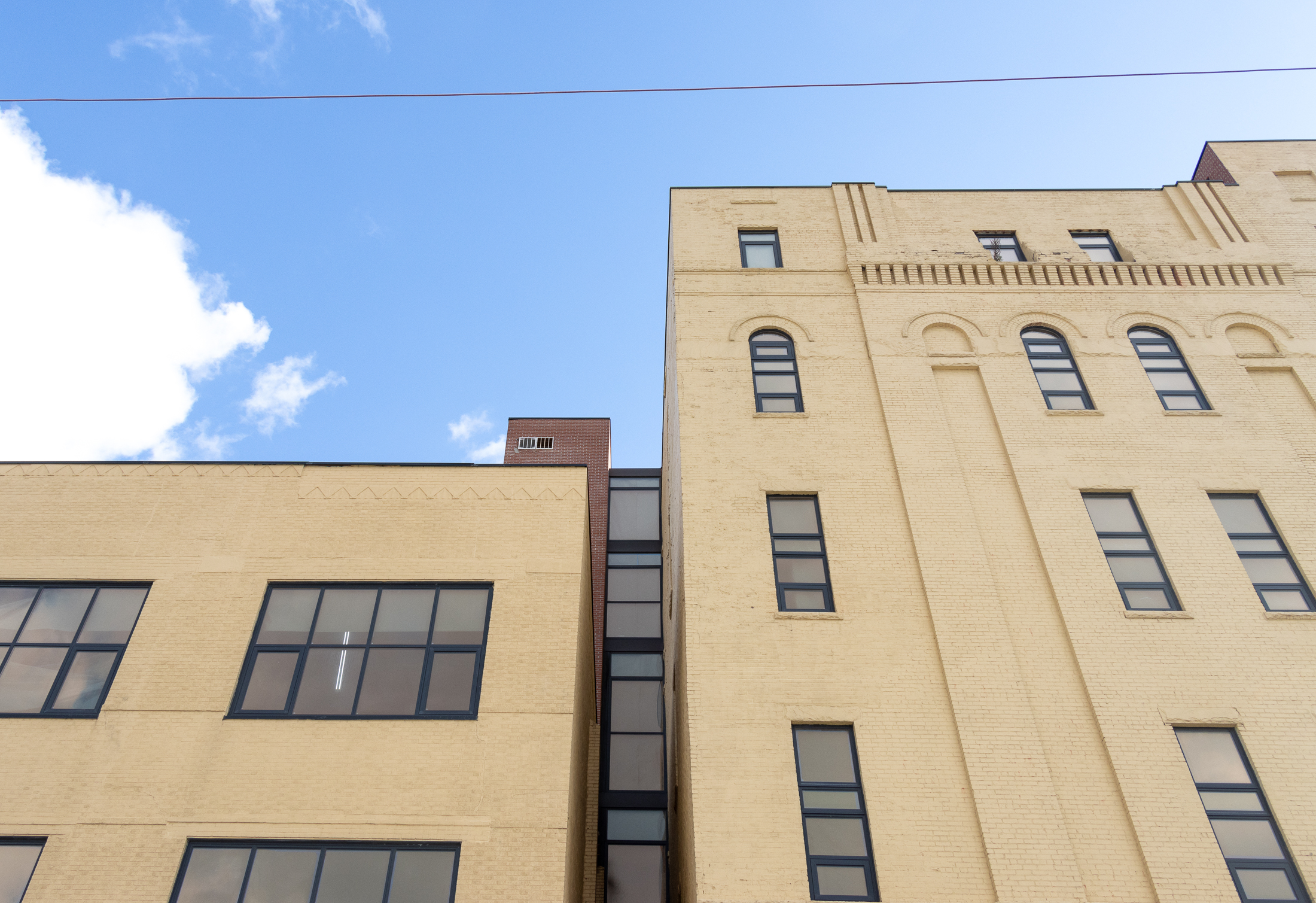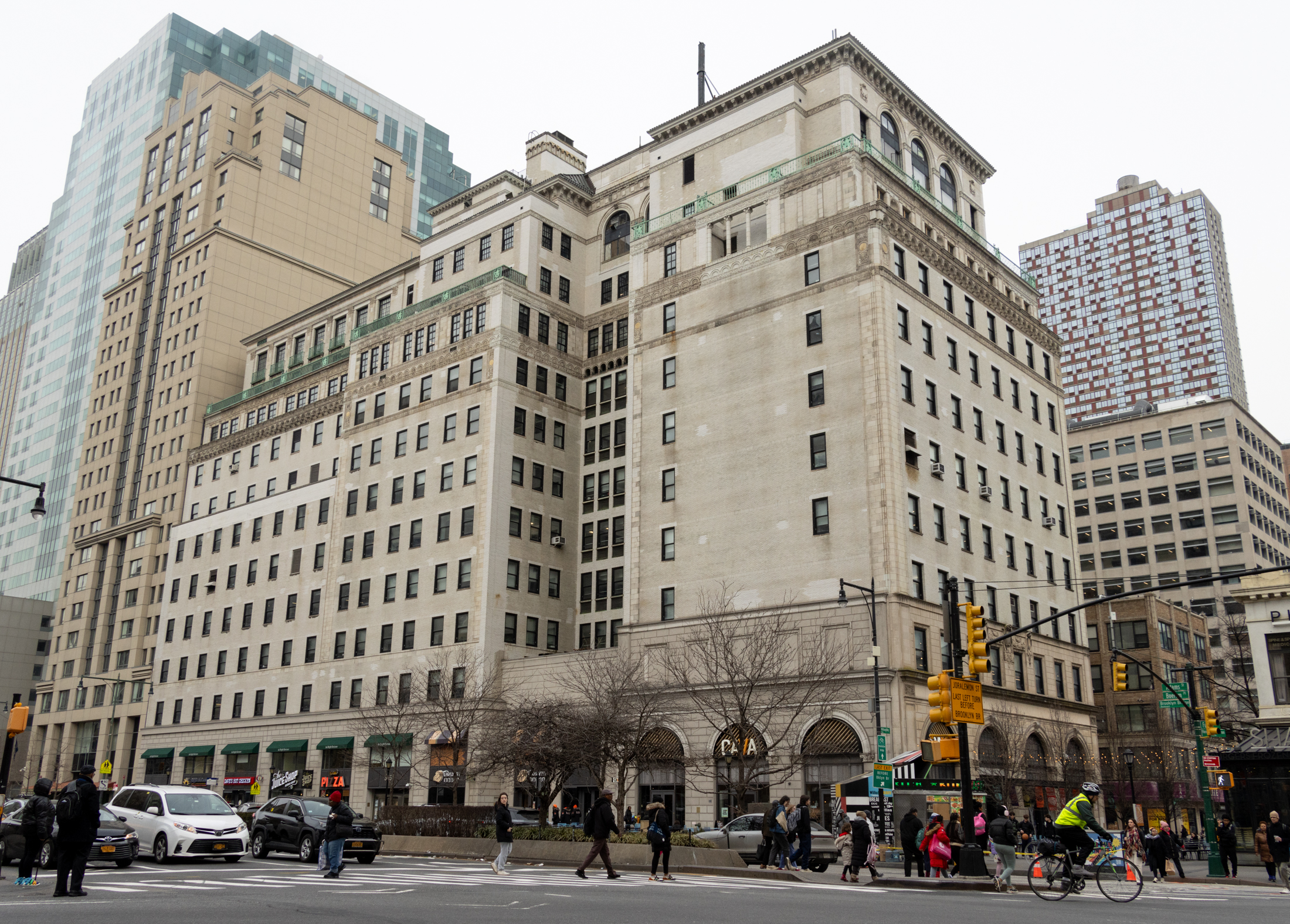Building of the Day: 135 Joralemon Street
The BOTD is a no-frills look at interesting structures of all types and from all neighborhoods. There will be old, new, important, forgotten, public, private, good and bad. Whatever strikes our fancy. We hope you enjoy. Address: 135 Joralemon Street, between Henry and Clinton Name: Private house Neighborhood: Brooklyn Heights Year Built: 1833 Architectural Style:…

The BOTD is a no-frills look at interesting structures of all types and from all neighborhoods. There will be old, new, important, forgotten, public, private, good and bad. Whatever strikes our fancy. We hope you enjoy.
Address: 135 Joralemon Street, between Henry and Clinton
Name: Private house
Neighborhood: Brooklyn Heights
Year Built: 1833
Architectural Style: Federal, with later porch and ironwork.
Architect: Unknown
Landmarked: Yes, part of the Brooklyn Heights HD, the first HD, landmarked in 1965.
Why chosen: For many people, if you had to put a building on the cover of a book about Brooklyn Heights, this would be it. Part of its charm is its location, not over in the older, northern part of the Heights, where clapboard houses are more common, but here, sandwiched between buildings of a much later date, a delightful remnant of an earlier time, when all of Brooklyn Heights was filled with Federal style clapboard houses and buildings. The earliest homes over in the Middagh Street area date from the 1820’s, this one is only ten or so years later, which still makes it one of the older buildings in the Heights.
It’s a wonderful two story, plus basement floor and attic, with twin dormers, clapboard siding, and a wide Italianate porch superbly ornamented by cast iron work that gives the house a Charleston or New Orleans flare. The porch and ironwork were added sometime in the middle 1800’s. Records show a Dr. John Haslett, a surgeon with the US Navy, living here in 1833, perhaps the first owner of the house. Brooklyn Heights had its ups and downs over the century, and by 1936, when photographer Berenice Abbott was documenting the buildings of Brooklyn, the house was looking a little worse for wear, but still had great dignity.
On New Year’s Eve, 2004, a devastating fire burned through the interior, and many feared the house was too far gone to restore. But it wasn’t anything a whole lot of money couldn’t fix. By 2008, the renovated house was the winner of the Landmarks Conservancy’s Lucy G. Moses Preservation Award. The line to get into the house during that year’s Brooklyn Heights House tour stretched for a block, showing that there is much interest in one of Brooklyn’s most iconic houses. That year it also was listed for almost $6 million. It went down in price by a couple million, but I don’t think Dr. Haslett would even be able to comprehend that much money. Who would have thought? I really like the shutters in the 1936 photo.
(Photo: Berenice Abbott, 1936. NY Public Library)
(Photo: Gotham Gazette, by way of Landmarks Conservancy)











I live a few buildings away from this house. i pass it every day. i remember the fire in 2004. it was in poor condition before the fire and i was afraid it would be lost. it was vacant for a few years and then was restored. i think the new windows at the first floor are not historically accurate. i dont know how this cleared LPC. if you see the 1930s photo and compare it to the recent one, the glazing and door and window frames are off. i haven’t seen many people go in and out but there are lights and tvs on. the front garden needs to be cared for/renovated.
I meant Douglaston, Queens, not Stapleton.
First of all, most of Manhattan is NOT landmarked. No one is restricting building in this most desired of boroughs. That includes most of the Upper East Side, long the home of “starter apartments” for the younger set. You haven’t explained why the young are required to live close to transit or anything else. Are they incapable of walking? You’d have a better argument demanding that the old live near transit.
As Bxgrl said, many far flung neighborhoods not especially blessed by mass transit opportunities are asking for landmarked status. It has nothing to do with affordability, but everything to do with preserving architecture and a quality of life that is worthy of protection. The expense of certain neighborhoods has nothing to do with their landmark status, yea or nay. Brooklyn Heights has been expensive since it was developed, about when this house was built. Only after WW2 until the 70’s-80’s, did it go through a period of flux, with parts becoming more working class, but even then, there were always certain streets and parts of the Hts that were, and always will be expensive.
Landmarking does not mean “no build zone”. It means contextural building, which is only more expensive if you have an architect with no imagination, and inability to design contexturally. And yes, some things, like windows, may cost more, but the old “landmarks MADE me buy the most expensive windows on the market” is just not true. They have alternative suggestions, and will work with people, and their suggestions are not just satisfying heartless bureaucrats, but are actually cost effective repairs that will last longer, and work better than the the cheap crap, anyway. That goes for facade work, windows, and anything else.
There aren’t many landmarks in southern Brooklyn or Staten Island because there is no grass roots movement to landmark. There are certainly plenty of architecture in both places that are worthy of landmarking, but if people don’t want it, the LPC has their hands full with the many people who do. Thank goodness some parts, like Stapleton, on S.I. are landmarked.
Finally, again echoing Bxgrl, landmarking is not for the elite. Most of the areas now working on landmarking are populated by middle and working class folks, like in Bed Stuy, Crown Heights, Woodside, and Stapleton, Queens, and areas in the Bronx. It’s just regular folks, who know all about the restrictions and the rules, but want the protection of landmarking anyway, to preserve the beauty and the livability of their neighborhoods. Making it a class war is just not factual.
“When they make this statement, they conveniently forget to mention that these landmarked areas are those best served by mass-transit and are closest to the central city”
actually, neither Bed-Stuy or Crown heights are best served by mass transit. I’ll give you Brooklyn Heights, which indeed is greatly served.Considering all the areas in the Bronx, Brooklyn and even Queens that are asking to be landmarked, and are not closest to Manhattan, nor overly served by mass transit,I would say we haven’t conveniently forgotten anything.
Thwackamole;
After trying to argue the case from a city-planning POV for a long time on this site, I have come to the conclusion that the best way to resolve this issue is to let landmarking go to its logical end. Consider the folowing:
-after 25 years, every district that becomes landmarked becomes the precinct for the wealthy, be it Cobble Hill, Soho, Tribeca, you name it. Same thing will happen with Prospect Heights and Crown Heights, as only the rich can afford to undertake the task of keeping up with the LPC requirements.
-preservationists like to tout the fact that only “x” percent of the homes in NYC are landmarked. When they make this statement, they conveniently forget to mention that these landmarked areas are those best served by mass-transit and are closest to the central city. There aren’t many landmarked homes in Southern Brooklyn or Staten Island. When you consider how much on in-close Brooklyn is landmarked, the percentage becomes very significant.
So consider where the city will be in 25 years: it is projected to grow by a million people, and the preservationist will be left defending elite low-scale, areas while they propose that other folks get crammed into the periphery.
This scenario is not sustainable, and goes against “green” city planning. It will eventually collapse under the inherent contradictions. In the meantime, don’t sweat it too much. I am convinced that this movement is in the throes of over-reach – a sure sign that they are in their last glory days.
“…We also give up the substantially higher tax revenues of a 10-family vs a 1 family…”
You assume that land value in a place like Brooklyn Heights would remain constant if each parcel were developed to the max allowed by zoning. I highly doubt it; a big chunk of the value is the market premium placed on living among a highly concentrated group of old houses.
“This keeps the density down, but makes it much harder for younger people to afford to live in landmarked areas, and means that they have to live further away from services, subways, etc– the cost to society is immense, but owners of landmarked buildings don’t pay it.”
Thwackamole- 16% of the city is landmarked. No one is entitled to live in a landmarked district.Nor are younger people entitled to live closer to services than anyone else. Poorer people in poorer neighborhoods live with this problem everyday- it is not related to landmarking. And I’m sorry but Manhattan is not expensive because of landmarking- it’s expensive for a lot of other reasons.And your comment about the cost to society and owners of landmarked buildings not paying it is not true. They pay taxes like any other property owner, and often more than real estate developers who get tax abatements and other breaks.LPC will also work with homeowners to help them with renovations, plus they do not require you restore your home (facade) to its glory days. Really, the impact of landmarking is not real problem in NYC real estate.
I’ve lived in a landmarked house for many many years. I understand the rules and what they do for the neighborhood, but I also see tremendous inefficiencies that overwhelm the positives.
This doesn’t mean that landmarking, especially in this instance, is good.
Landmarking makes it more expensive to repair, expand, or replace your home. This keeps the density down, but makes it much harder for younger people to afford to live in landmarked areas, and means that they have to live further away from services, subways, etc– the cost to society is immense, but owners of landmarked buildings don’t pay it.
This might be acceptable if only 1% of the buildings were landmarked, but with our downzoning, landmarked historic districts, etc., we’ve essentially turned half of the city into a ‘no build zone’.
Thwackamole, obviously you don’t like or understand landmarking. That is your right, as it is your compatriot’s, Benson. Fortunately, a lot of us do, and are extremely grateful those laws are on the books to stay.
There are plenty of places, a huge majority of 90%, actually, that are not landmarked, so go to it. Build away. Do good. Leave our landmarked neighborhoods alone, as we like them the way they are.